Archigram was an Avant-grade group that existed between 1961 and 1974. They drew inspiration from technology to create new realties that was expressed through their hypothetical projects, such as, A Walking City, Living Pod, and Instant City. The Archigram pamphlet was printed in 1961 and held all their ideas of high tech survival technology. They experimented with modular technology and how a structure would move through an environment and although they focused on the technology of the machine and the advancement of the world, they dismissed social and environmental issues. They thought that change was integral to how a city works and if there was no ability to change then the city would destroy itself.
Archigram were anti-heroic, believing that architecture had become too egotistical, this idea was learnt from Cedric Price and Futurists. They wanted architecture to be first about people before it was about anything else, they wanted to design something that would change with its inhabitants rather than staying static. Although they believed unquestionably in change, they did not approve of bulldozing architectural history, they suggested that it should be built upon and evolved to be part of the modern world rather than destroyed forever.
The architects that made up Archigram were Warren Chalk, Peter Cook, Dennis Crompton, David Greene, Ron Herron and Michael Webb, these architects created many collages showcasing their three main ideas.
During their thirteen-year existence they questioned the notion that buildings needed to be static, Archigram suggested technology rich mobile alternatives, believing them to be the change that cities needed. Ron Herron?s A Walking City was originally set in a dystopian New York, the giant robots would walk over water and land to wherever they were required, connecting with others to create one big hub just like a city. By creating moving cities, Herron proposed that this was the change that was needed, these mobile giants could bring resources and urban development?s wherever they were necessary. Herron?s initial inspiration for the roaming robots came from insects combined with revolutionary machinery. Although the pods seemed independent they relied on the transfer of goods and people wherever they landed, they did this by ?plugging into? way stations to exchange. Herron?s vision of the future was one that had been ravaged by a nuclear war where the citizens of the world needed a refuge, his suggestion was designed to be a simple yet affective way to survive on the surface whilst avoiding the nuclear damage.
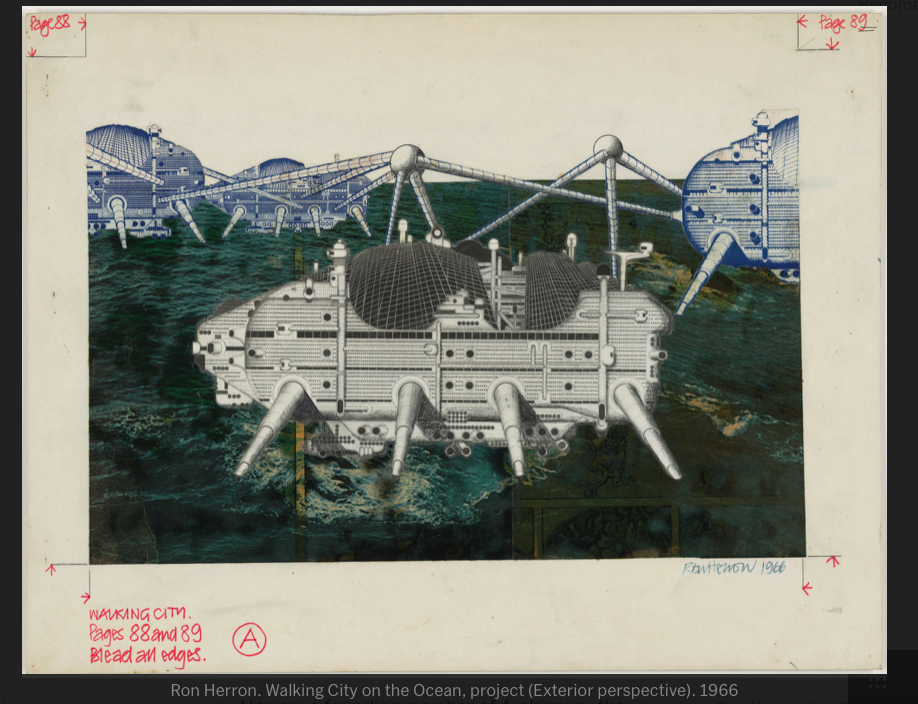 Ron Herron. Walking City on the Ocean, 1966. https://www.moma.org/collection/works/814
Ron Herron. Walking City on the Ocean, 1966. https://www.moma.org/collection/works/814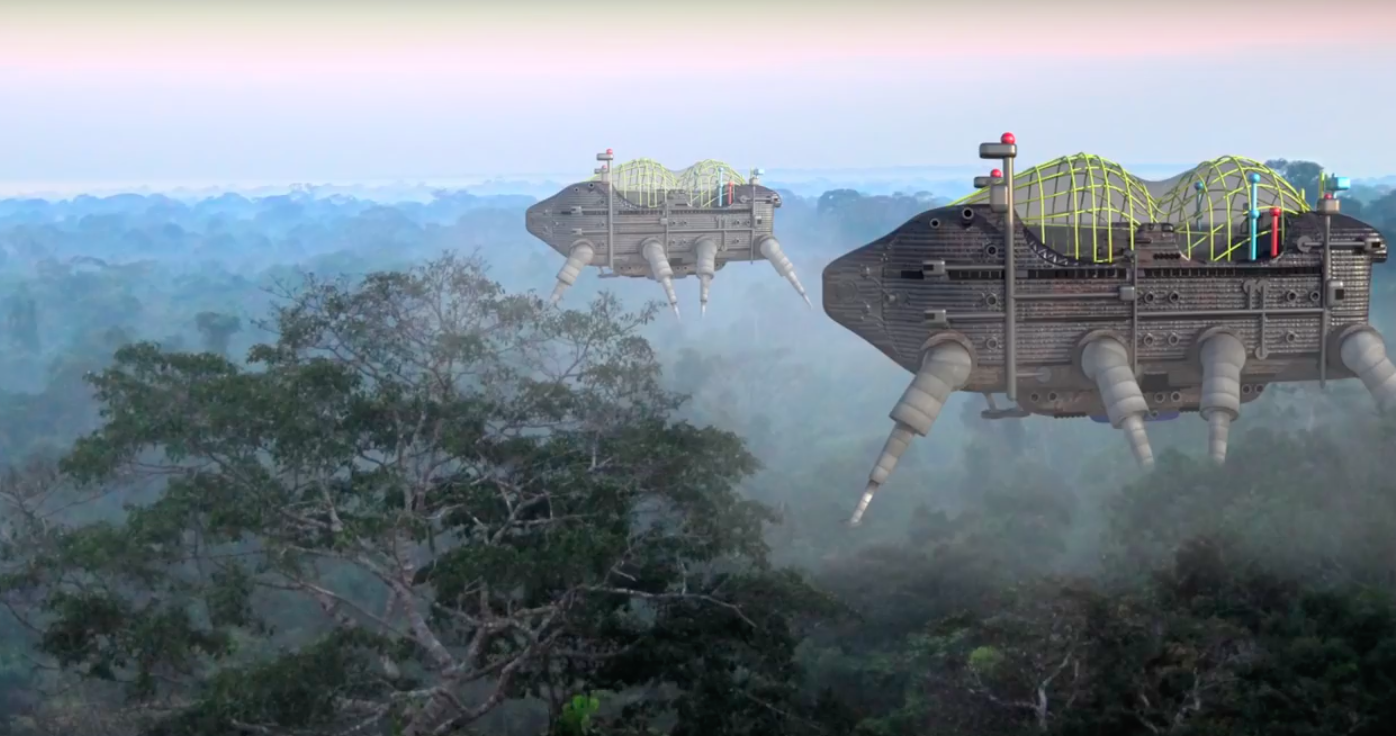
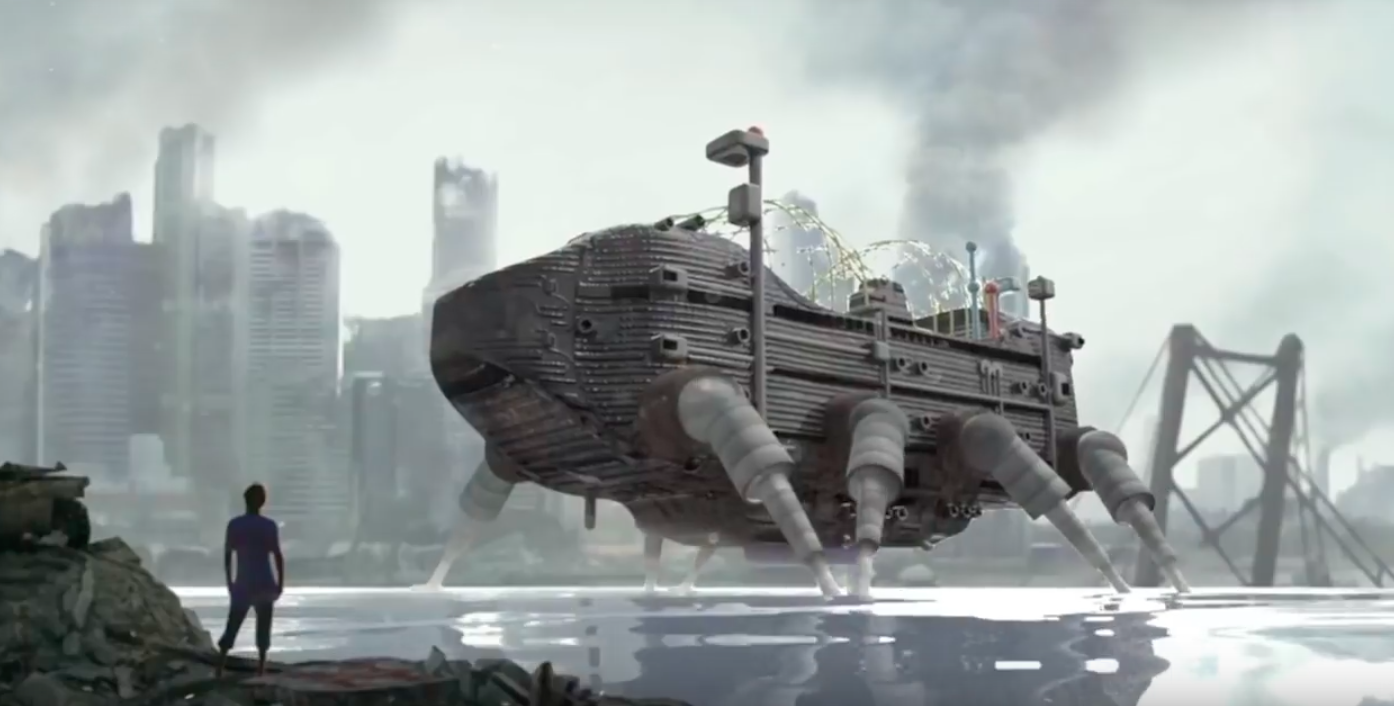 https://www.youtube.com/watch?v=LYHG_t7SF8E. An Animation done by Sofia Zavala, Maxwell Baum, Tyler Wolcott to showcase Ron Herron?s ?A Walking City?.
https://www.youtube.com/watch?v=LYHG_t7SF8E. An Animation done by Sofia Zavala, Maxwell Baum, Tyler Wolcott to showcase Ron Herron?s ?A Walking City?.
I originally wanted to create a walking stadium or performance centre to make a statement about how big stadiums take up valuable space and recourses on the hosting city. If these stadiums were ?walking? they would be able to take the band or sports function that was touring all around the country or world not straining the host cities economy. However, this idea didn?t follow Ron Herron?s original ?Walking City? so I went back to making a full ?walking city?.
Taking into consideration Ron Herron?s and Archigram?s techniques and conceptual ideas I have come up with my own interpretation of ?A Walking City?. I utilised Herron?s combination of insects and technology to create my ?Walking City?, my city has an insect-like ?head? and its ?body? is insect-like in shape, but its legs are mechanical and periscopic. The general shape the body may be insect-like on the outside but the undercarriage is flat and structurally technological, allowing the legs to sit at a right angle from the body rather than at a 45-degree angle as they were in my previous iterations. To create the insect effect, I sanded down all the edges to make it seem like one whole piece rather than individually cut out shapes. This also allowed me to hide the glue that I used as I could sand it to sit flat against the balsa wood.
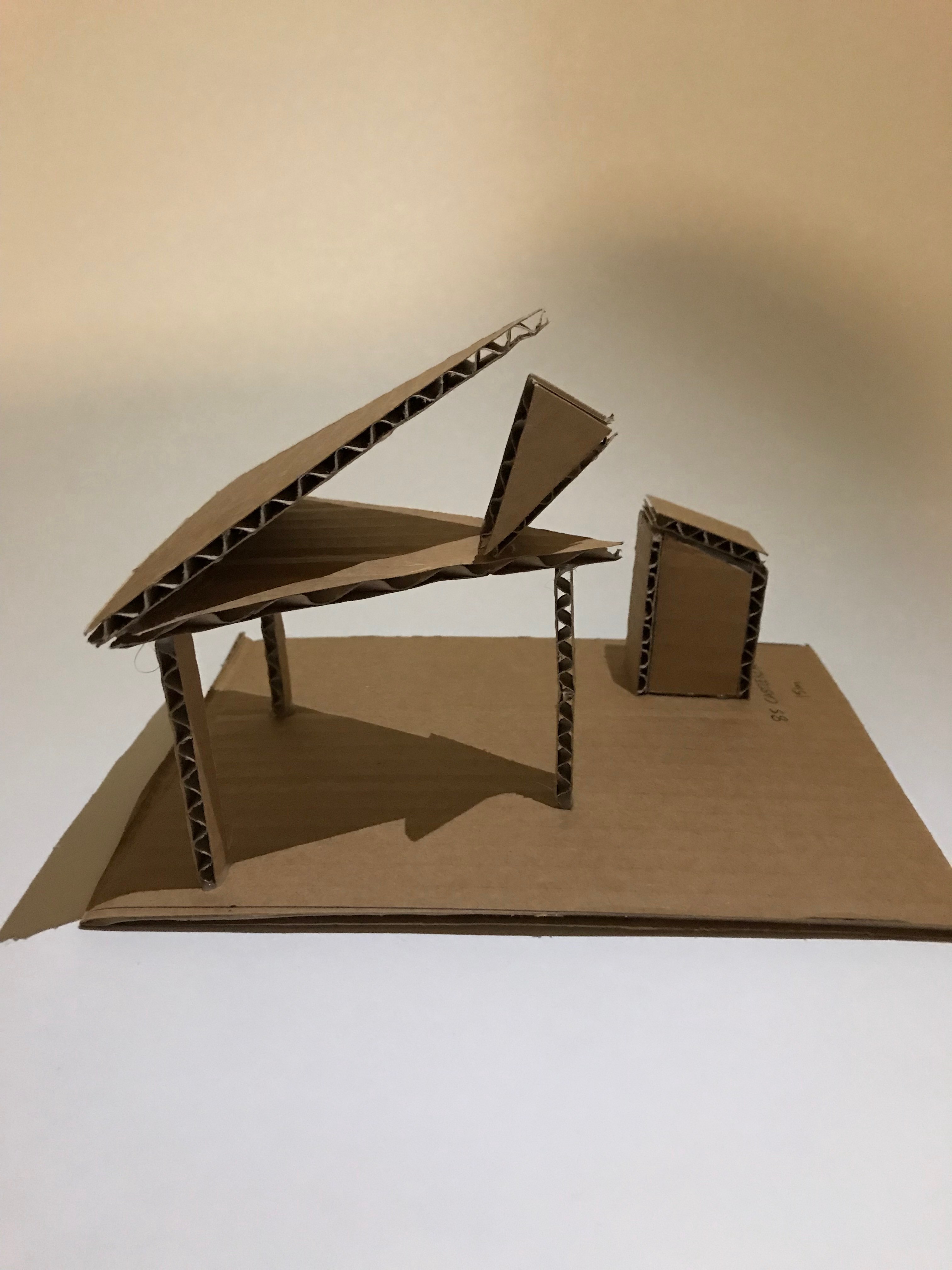

 Fist 3 iterations. Walking Stadiums. Made from cardboard and put together with hot glue.
Fist 3 iterations. Walking Stadiums. Made from cardboard and put together with hot glue.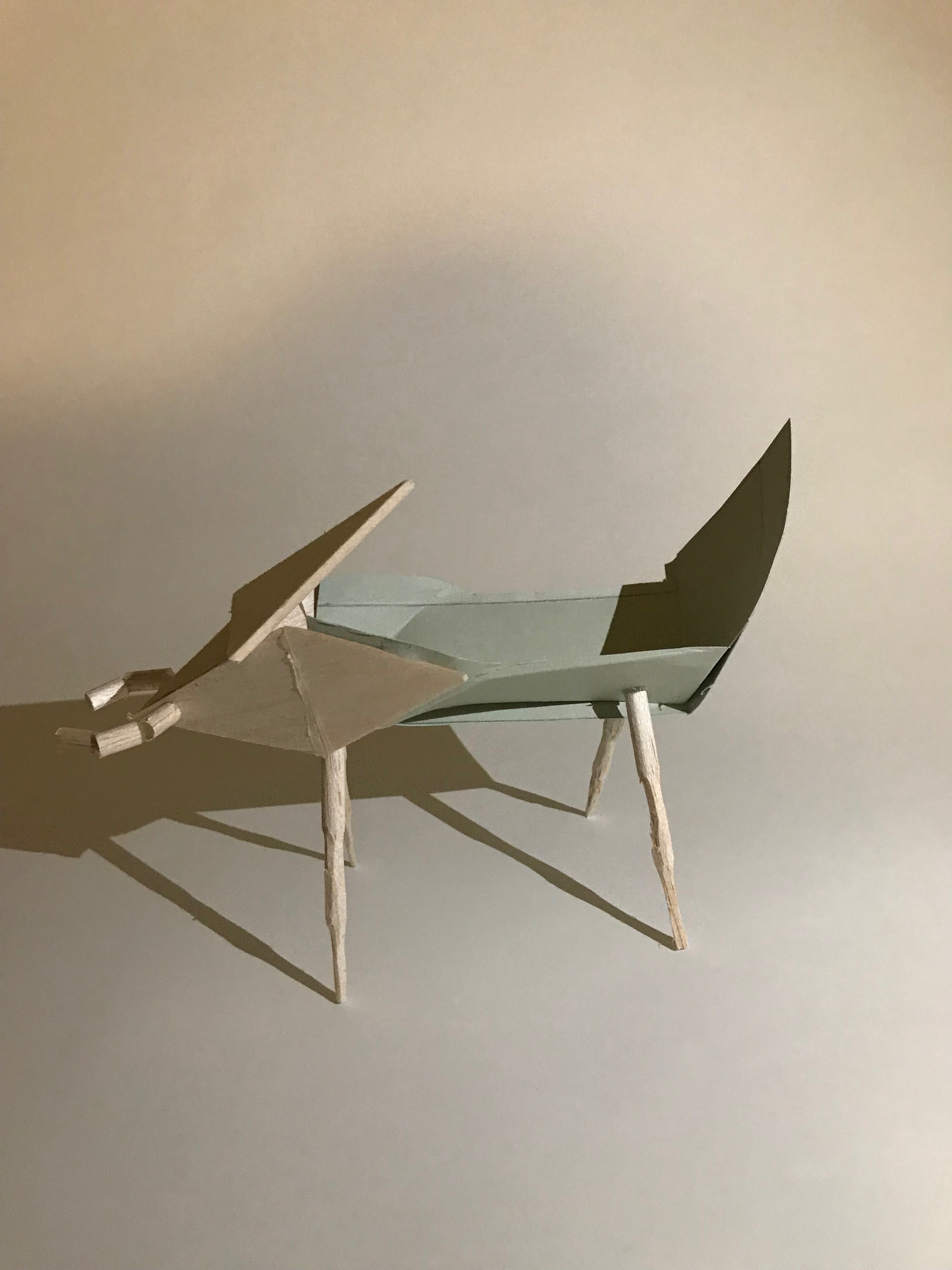

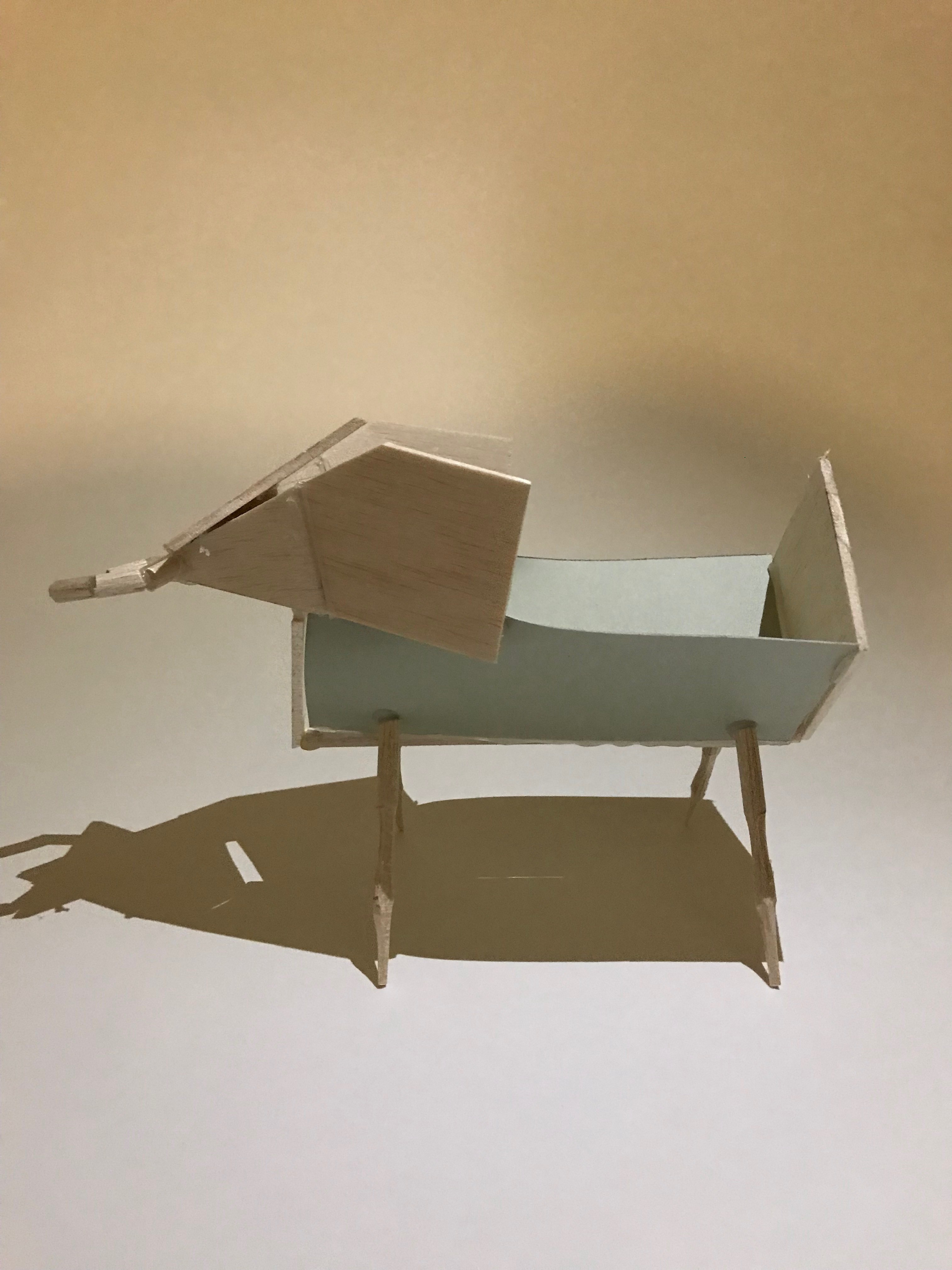 Second 3 iterations. Insect-like ?Walking Cities?. Made from balsa wood and light green card paper. Put together with hot glue.
Second 3 iterations. Insect-like ?Walking Cities?. Made from balsa wood and light green card paper. Put together with hot glue.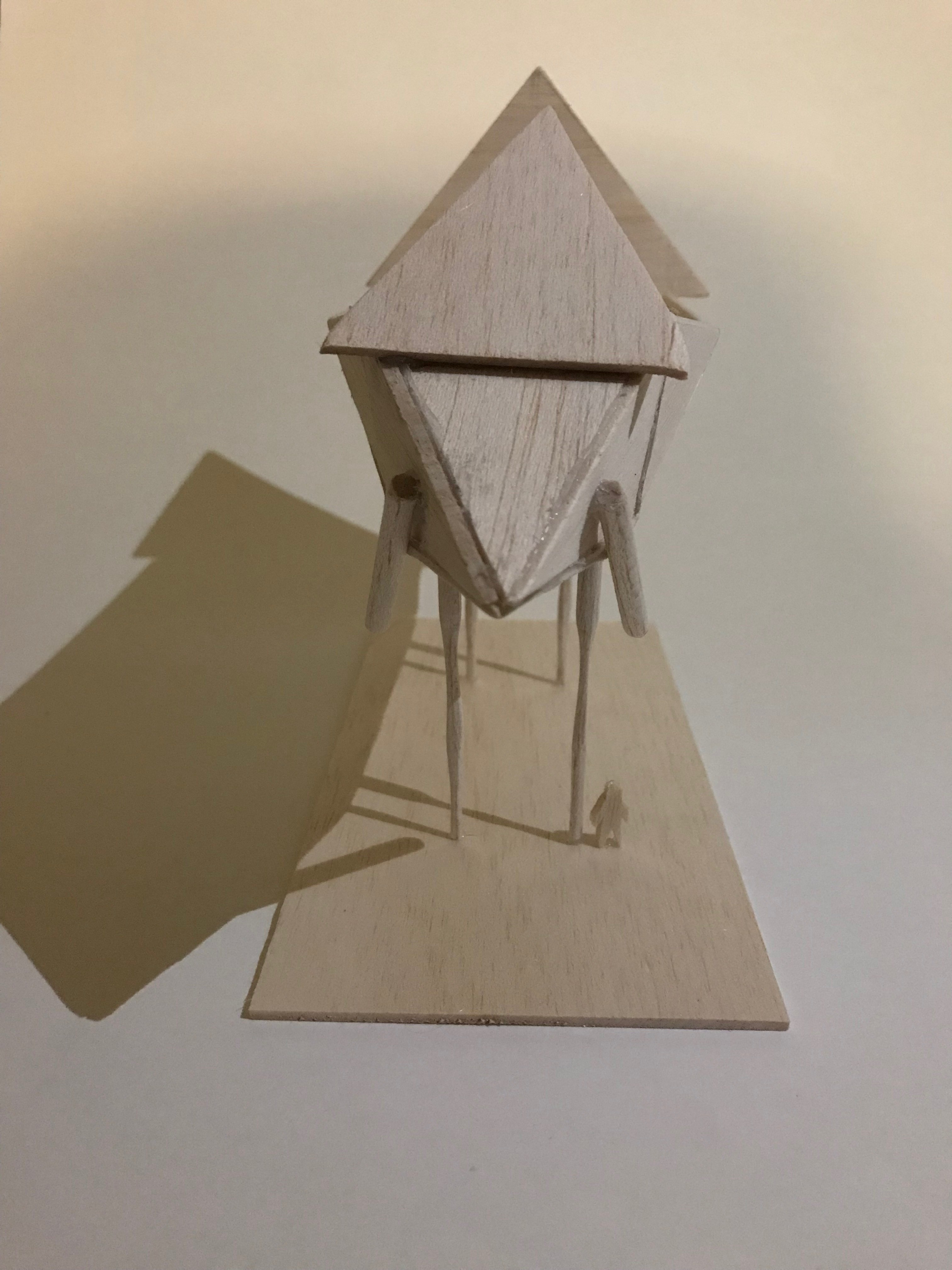 Final model with scale silhouette. Made from balsa wood and put together with hot glue.
Final model with scale silhouette. Made from balsa wood and put together with hot glue.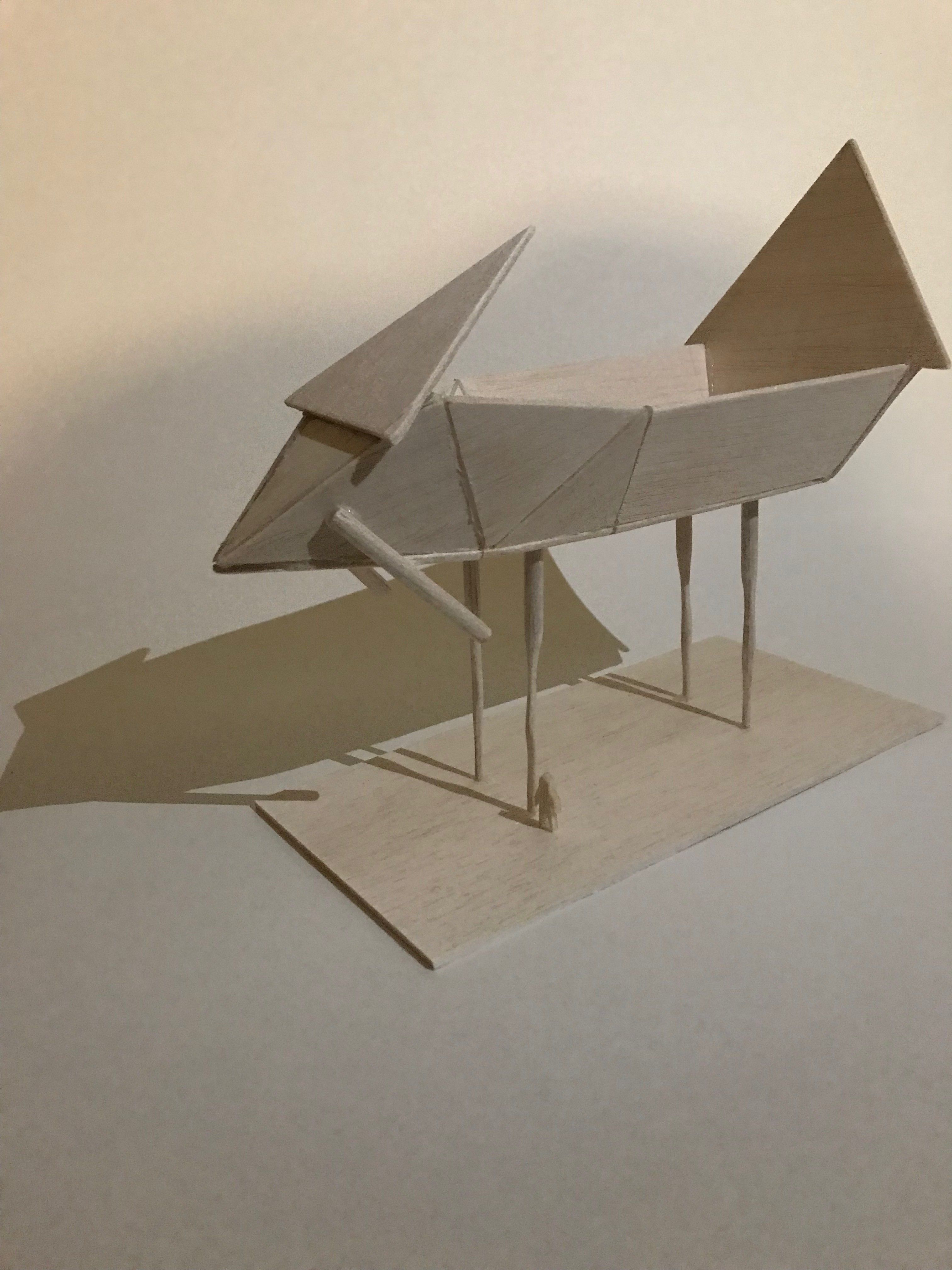 Final model with scale silhouette. Made from balsa wood and put together with hot glue.
Final model with scale silhouette. Made from balsa wood and put together with hot glue.
References:
Ron Herron. Walking City on the Ocean, project (Exterior perspective). 1966, MoMAWebsite, Moma.org, https://www.moma.org/collection/works/814
Walking City, from Archigram,The Seasteading Institute, https://www.seasteading.org/2011/03/walking-city-archigram/
The Walking City ? (Archigram + Tarantino),YouTube, https://www.youtube.com/watch?v=LYHG_t7SF8E
1964 ? Walking City ? Ron Herron (British) ? cyberneticzoo.com, cyberneticzoo.com, http://cyberneticzoo.com/walking-machines/1964-walking-city-ron-herron-british/
The Weirdest Architects of the ?60s Were Right About the Future, CityLab, https://www.citylab.com/design/2017/11/the-prophetic-side-of-archigram/545759/
Archigram: The Walking City, Living Pod and the Instant City ? Victoria and Albert, Museum,Vam.ac.uk, http://www.vam.ac.uk/content/articles/a/archigram-walking-city-living-pod-instant-city/


